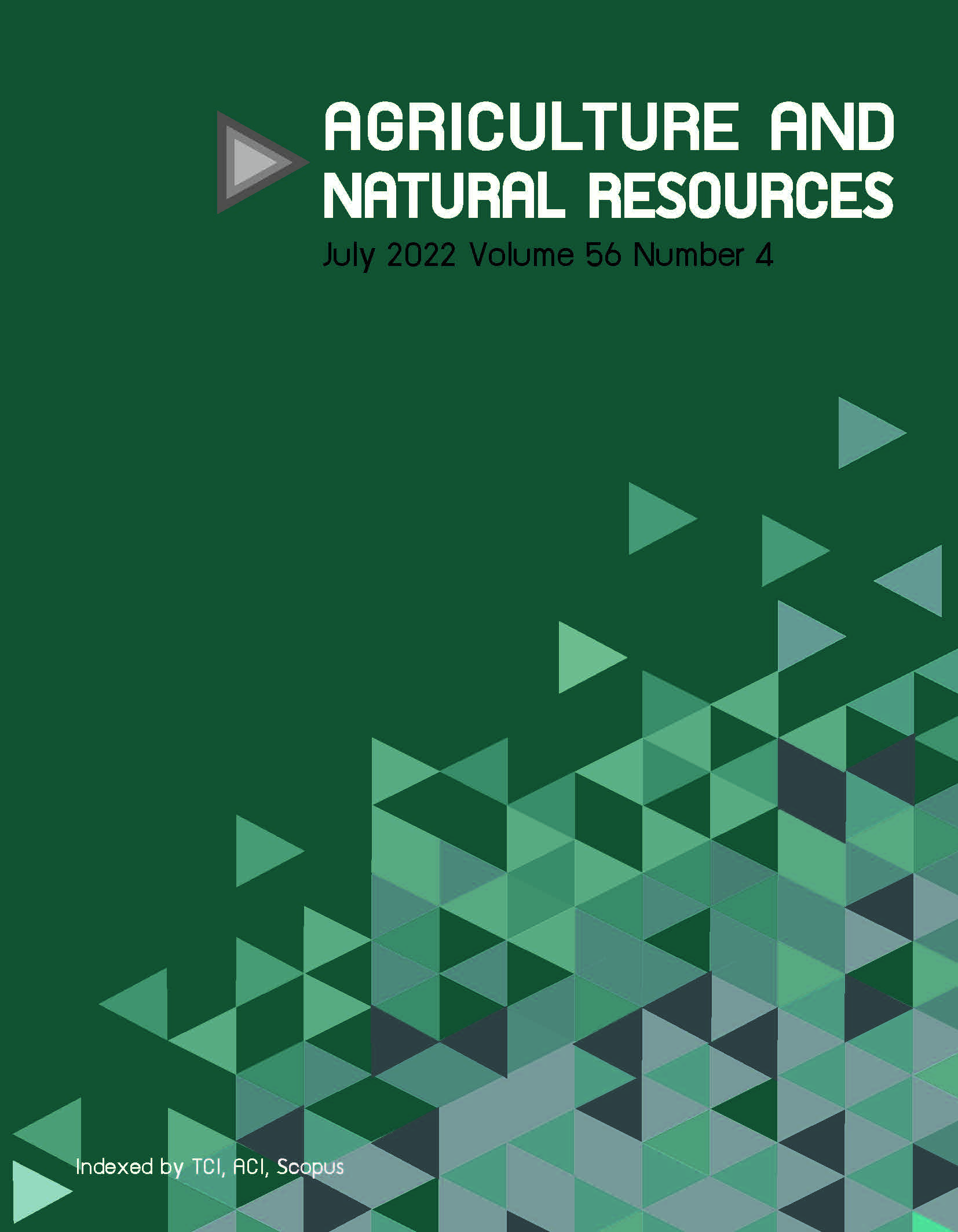Assessing DNA extraction methods for metagenomic analysis from crop soil in Thailand
Keywords:
Crop soil, DNA extraction, DNA purification, Metagenomic analysisAbstract
Importance of the work: Metagenomic analysis has been used to study environmental microbial diversity. However, isolating soil DNA for metagenomic analysis can be problematic.
Objectives: To evaluate six methods for extracting DNA from soil growing major crops in Thailand.
Materials & Methods: DNA from soil growing rice, maize, oil palm or cassava was manually extracted and analyzed using agarose gel electrophoresis and spectroscopy. The presence of polymerase chain reaction (PCR)-inhibiting contaminants was assessed based on 16s rRNA amplification. Then, agarose gel purification was evaluated for its efficiency in removing the impurities.
Results: The Tanveer and Gupta D protocols yielded the highest amount of DNA on average, while the Gupta C and Gupta E protocols produced clear genomic DNA bands. However, all DNA samples were contaminated with PCR inhibitors. Therefore, additional purification was needed. Agarose gel purification was performed only on DNA from the Gupta C and Gupta E protocols, with genomic bands detected. The purification removed sufficient contaminants with an average recovery rate of 50%, with Gupta C having a higher recovery rate variation. The statistical analyses applied to the concentration and absorbance ratios of purified DNA showed that the Gupta E protocol was suitable for soil growing oil palm and maize, whereas the Gupta C protocol was appropriate for soil growing rice and cassava.
Main finding: An appropriate DNA extraction method with an additional purification process should be selected for different soil types to obtain qualified samples for metagenome analysis.
Downloads
Published
How to Cite
Issue
Section
License
Licenseonline 2452-316X print 2468-1458/Copyright © 2022. This is an open access article under the CC BY-NC-ND license (http://creativecommons.org/licenses/by-nc-nd/4.0/),
production and hosting by Kasetsart University of Research and Development Institute on behalf of Kasetsart University.







